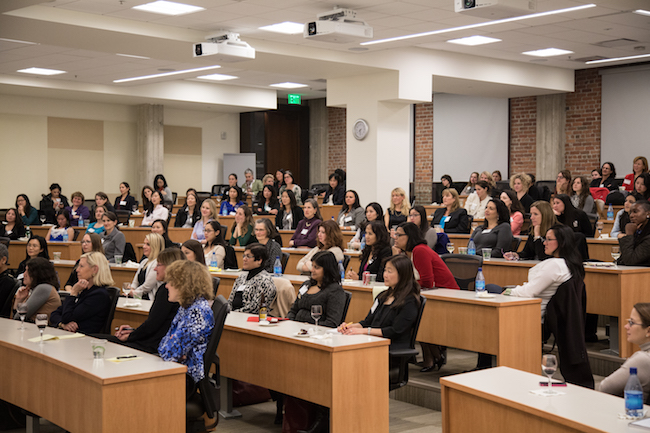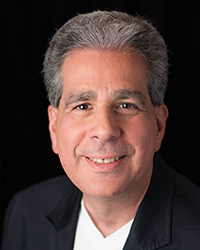
Women are increasing their numbers in EMBA programs, according to a new survey.
Female participation in executive MBA programs have surged nearly five percentage points over the last five years, according to the latest survey of EMBA programs worldwide.
The 2002 Membership Program Survey from the Executive MBA Council shows that female enrollment reached 34.8%, a new high for the survey of more than 200 member programs in 30 countries. That’s up from 33.4% in 2021 and up from 30.1% in 2017.
“The steady growth in women attending EMBA Programs is a positive signal for business schools and the business community at large,” says Michael Desiderio, EMBAC executive director, in a release.
TECHNOLOGY POWERING NEW INNOVATIONS
The survey also found that EMBA programs are increasingly incorporating technology into their curricula, almost certainly spurred on by the quick pivot online required by the COVID-19 pandemic. Some 86% of EMBA programs now offer some form of online learning, up from 55% in 2019. This increased use of technology has not only allowed EMBA programs to continue operating during the pandemic, but also provided greater flexibility for students.

Michael Desiderio
More prestige programs are embracing distance learning that is delivered synchronously – through live virtual meetings with professors and students. University of Michigan’s Ross School of Business opened its Convatec Digital Learning Studio, a state-of-the-art online MBA studio that tries to combine the advantages of in-class learning with the convenience of virtual delivery. In February last year, Emory University’s Goizueta Business School became the highest ranked school to launch a 100% online EMBA, utilizing its industry leading Global Classrooms developed in the middle of the pandemic. (Goizueta ranked eighth in our 2023 ranking of the best EMBA programs in the U.S.)
Since then, both The Wharton School and Cambridge Judge Business School at the University of Cambridge have recently launched Global EMBA programs that will be taught, at least in part, through live virtual classrooms.
EMBAC’s survey found, in fact, that the percentage of synchronous online delivery has increased from 34% of programs pre-pandemic to 44% in 2022. Further, more than 80% of programs use electronic cases and books.
“EMBA Programs continue to adapt to the changing needs of working professionals,” says Desiderio. “Much of that change comes from applying technology that allowed students to continue their education in the program during the pandemic in new ways that help enhance the in-person learning experience.”
COMPENSATION, PROMOTIONS ALSO UP
Findings of the membership report come on the heels of impressive compensation and promotions data reported in EMBAC’s 2022 Student Exit Survey released earlier this winter. In that report, respondents reported an average 17.7% increase in salary plus bonuses by the time they graduated from the program. That’s three full percentage points higher than the 14.7% increase reported by 2021 graduates, and outpaces the 2.5% increase in the average cost of the degree.
Further, 41% of exiting EMBA students reported receiving at least one promotion during the course of the program, up from 36% of 2021 graduates and 39% of 2020 grads.
The student survey, conducted by Percept Research, Inc., included 1,162 graduates of primarily U.S. EMBA Programs.
EMBA STATS & DEMOGRAPHICS
Other EMBA stats highlighted in EMBAC’s 2022 Membership Program and Student Exit surveys include:
- Students reported that their average compensation rose from $231,143 at the start of their executive MBA programs to $272,160 at the end. That’s up considerably from a year ago when average compensation rose from $166,549 at the start to $190,989 at the finish.
- 52% of 2022 students reported taking on more job responsibilities during the program, often a prerequisite to that coveted promotion. That’s up from 49% in 2021.
- Average age of EMBA students is 38.9 years, up slightly from 38 years on the 2021 survey.
- Students, on average, have 14.6 years of professional work experience and 9.2 years of managerial experience. Both categories are up slightly from 2021 which found students had an average of 14.1 years of work and 8.9 years of managerial experience.
- 61% of programs offer scholarships or fellowships and 31% of EMBA students received them. Support averaged a total of $223,700 in scholarship and fellowship funds, compared to $210,645 in 2021, and $134,779 five years earlier.
- 16.4% of students received full sponsorship from their employers while 56.2% were self-funded. In 2021, just 15.2% recently received full sponsorship.
- 92% of programs offered an international trip, up nearly 50 points from the 43% in 2021. Travel, it seems, is back after prolonged shutdowns in wake of the pandemic. Top destinations in 2022 were the United States, Germany, and England.
DON’T MISS: INSEAD HAS A NEW DEAN FROM IMPERIAL COLLEGE BUSINESS SCHOOL AND THE TOP 100 BUSINESS SCHOOLS, RANKED BY RESEARCH





Questions about this article? Email us or leave a comment below.